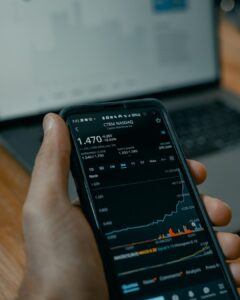Understanding Leverage and Margin with a Cent Forex Account
Forex trading is an exciting and potentially lucrative investment opportunity, but it also comes with risks. One of the factors that make forex trading unique is the use of leverage and margin. These tools can amplify your profits, but they can also magnify your losses. In this article, we will explore the concept of leverage and margin, specifically in the context of a cent forex account.
Leverage refers to the ability to control a large amount of money in the forex market with a small initial investment. It is expressed as a ratio, such as 1:100 or 1:500. This means that for every dollar you have in your account, you can control 100 or 500 dollars in the market, respectively. Leverage allows traders to take advantage of small price movements and potentially make significant profits.
For example, let’s say you have a cent forex account with a leverage ratio of 1:100. You have $100 in your account, but with leverage, you can control $10,000 in the market. If the currency pair you are trading moves 1% in your favor, you would make a $100 profit. Without leverage, your profit would only be $1.
While leverage can increase your potential profits, it also increases your risk. If the market moves against you, your losses will also be multiplied. Using the same example, if the currency pair moves 1% against you, you would lose $100. Without leverage, your loss would only be $1.
Margin is closely related to leverage and refers to the amount of money you need to have in your account to open and maintain a leveraged position. It is expressed as a percentage and is determined by the leverage ratio. In the example above, with a leverage ratio of 1:100, the margin requirement would be 1%. This means you need to have $100 in your account to control $10,000 in the market.
Margin plays a crucial role in risk management. If the losses on your positions exceed the amount of money in your account, you may receive a margin call from your broker. A margin call is a demand for additional funds to cover the losses. If you fail to meet the margin call, your positions may be automatically closed by the broker, resulting in further losses.
Cent forex accounts are designed for beginner traders who want to practice forex trading with small amounts of money. The main advantage of a cent account is that it allows traders to experience the real market conditions without risking large sums of money. In a cent account, the leverage and margin requirements are typically lower compared to standard accounts.
For example, a cent forex account may have a leverage ratio of 1:1000 and a margin requirement of 0.1%. This means that for every dollar in your account, you can control $1000 in the market, and you only need $0.10 in your account to control $100 in the market.
While the lower leverage and margin requirements in a cent account may seem attractive, it is important to remember that the risks are still present. Even though you are trading with smaller amounts of money, the potential losses can still be significant if the market moves against you.
To mitigate the risks associated with leverage and margin, it is crucial to have a solid risk management strategy in place. This includes setting stop-loss orders to limit potential losses, diversifying your portfolio, and not risking more than a certain percentage of your account on any single trade.
In conclusion, leverage and margin are powerful tools in forex trading that can amplify your profits, but they also come with increased risks. Understanding how leverage and margin work is essential for successful trading. With a cent forex account, beginners can experience real market conditions with lower leverage and margin requirements, but it is still important to have a solid risk management strategy in place to protect your capital.





